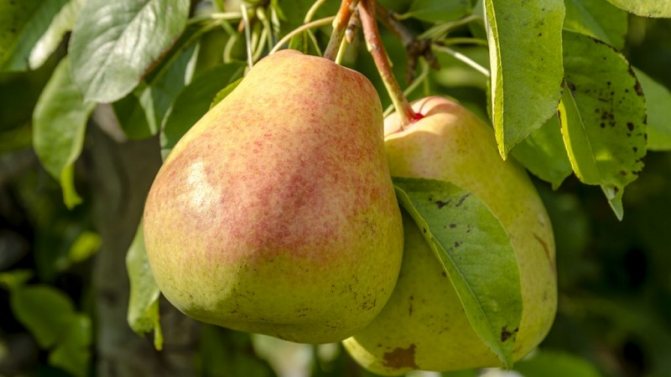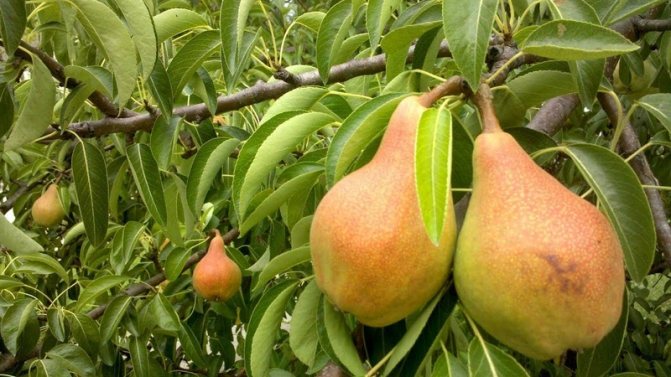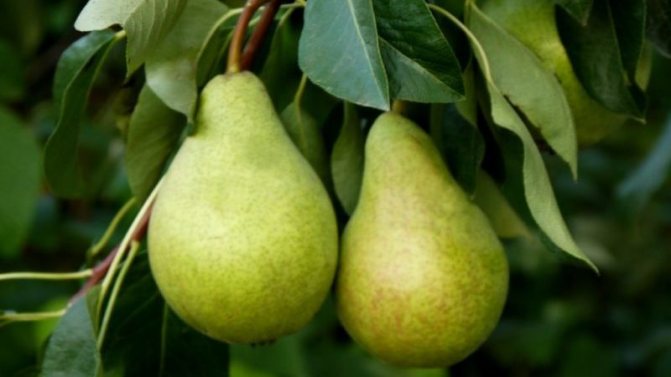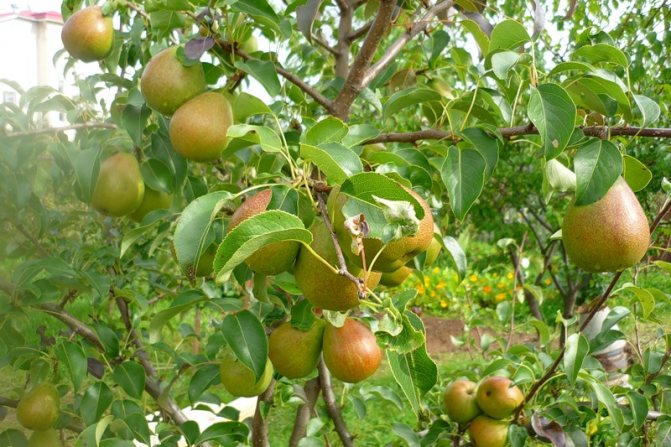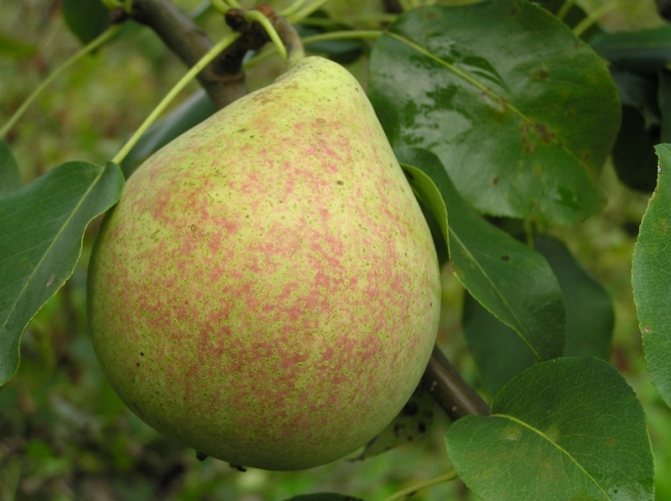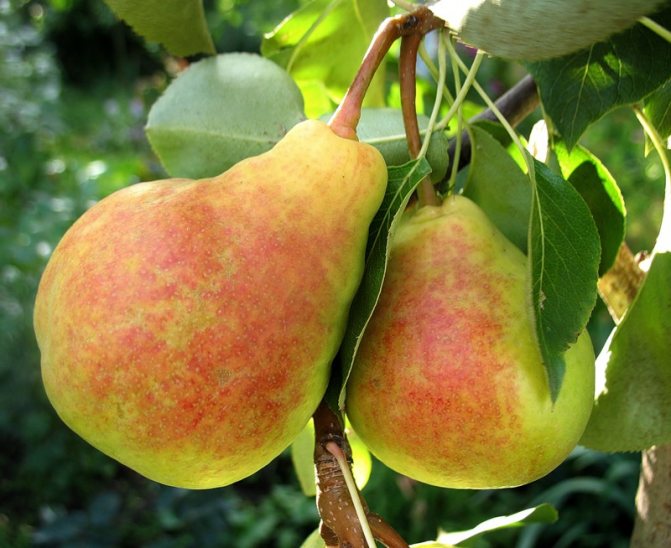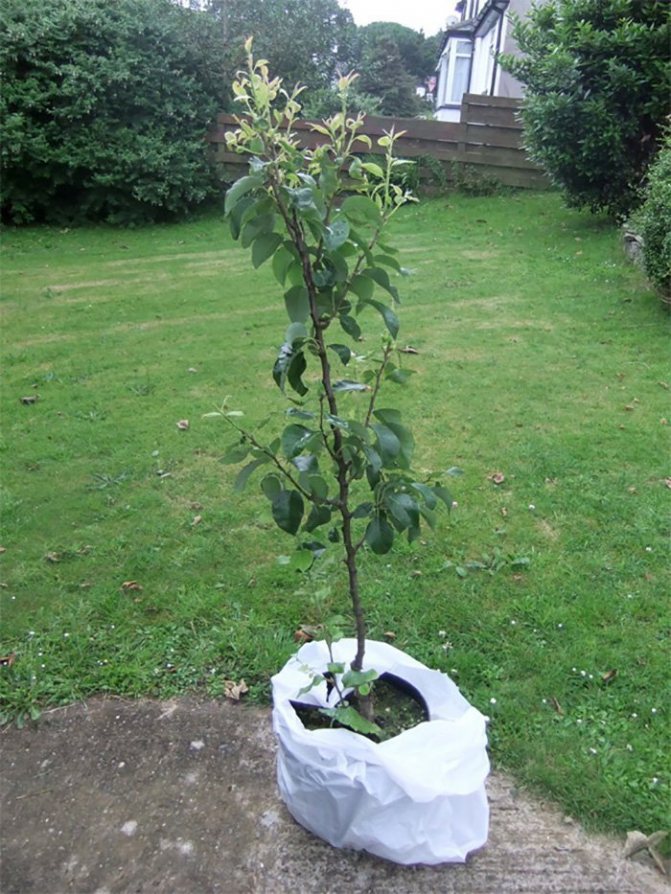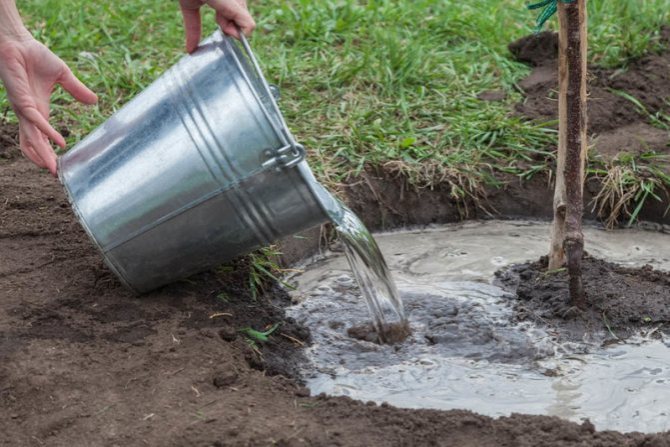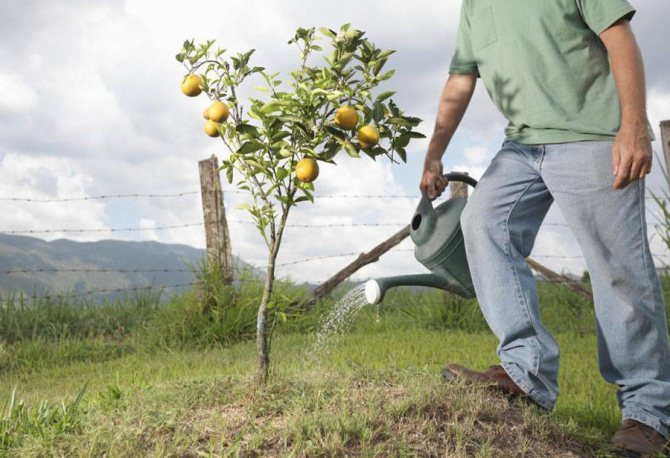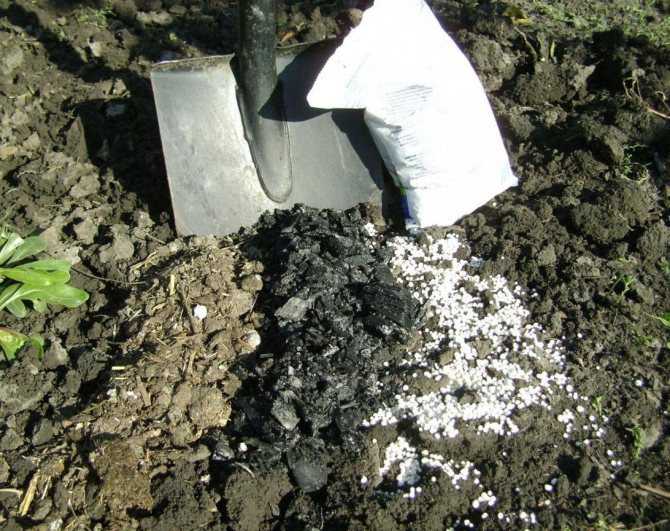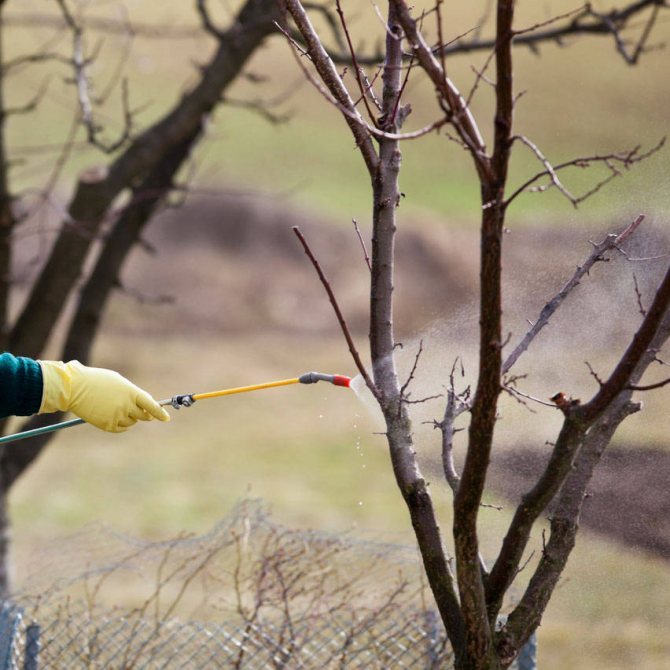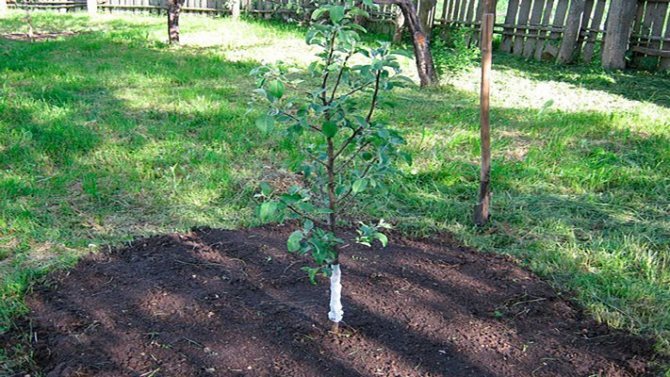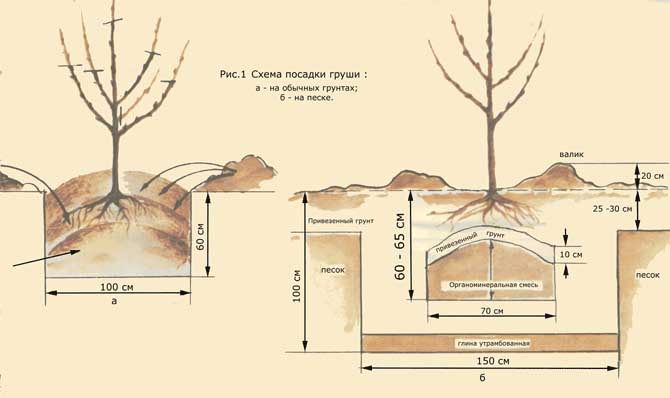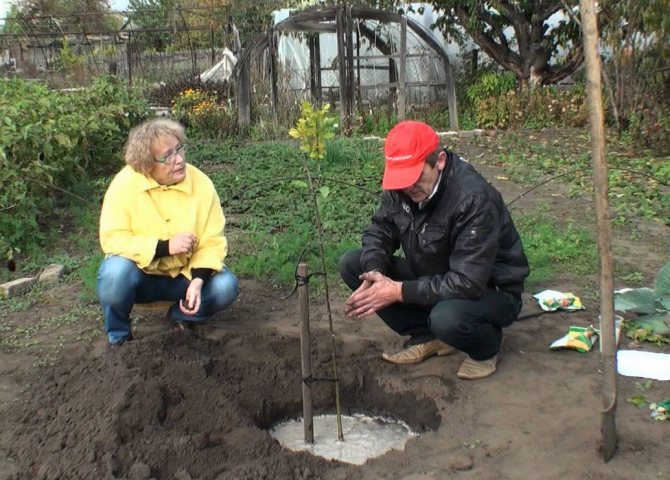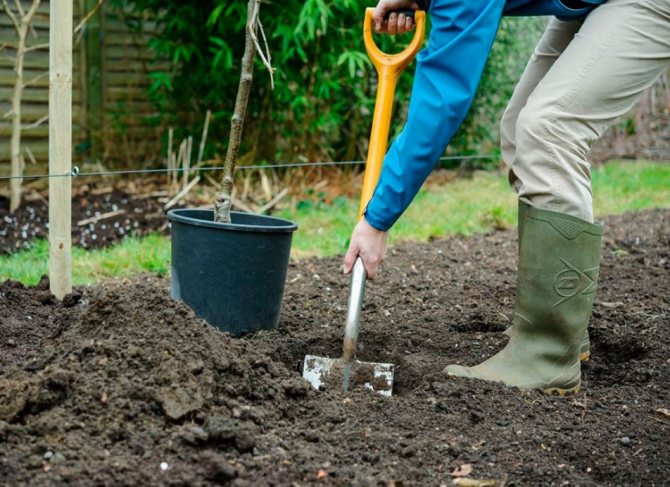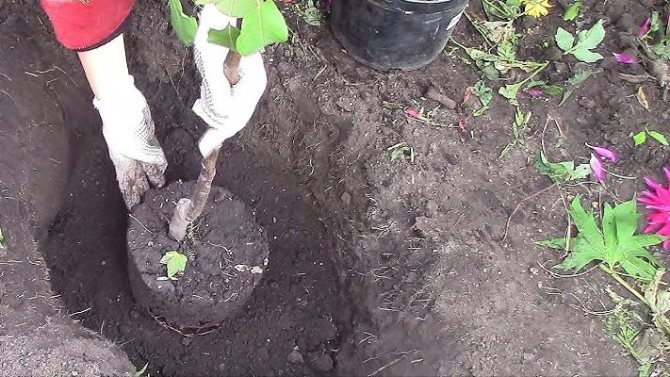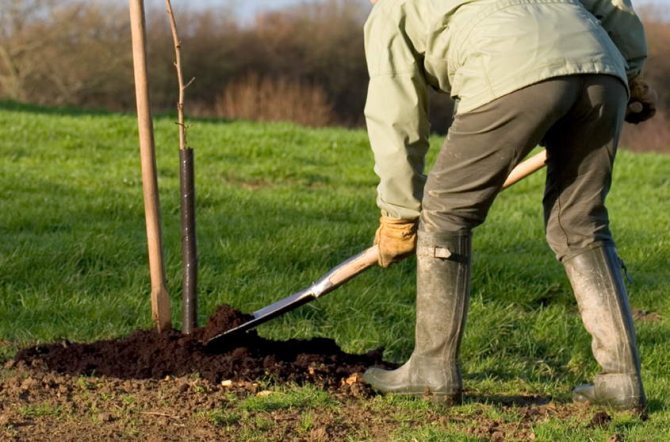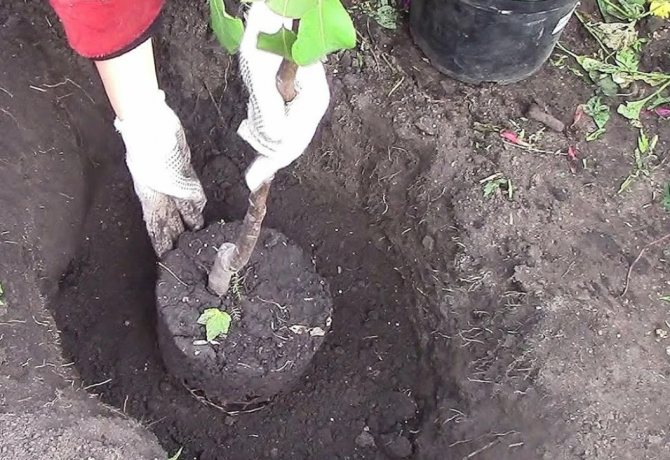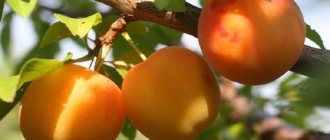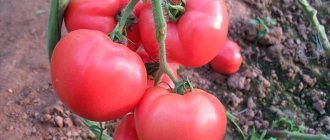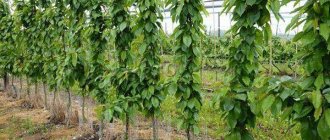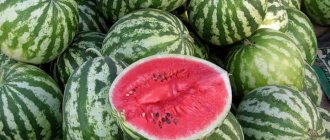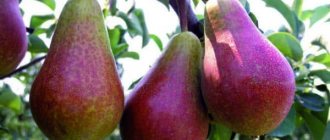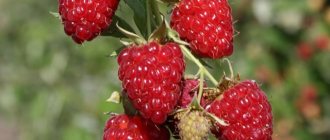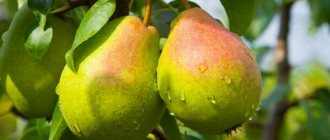Pear trees are often found in garden plots - juicy and fragrant fruits are eaten fresh, used to make jams and compotes, and dried for the winter. The culture does not need special care, it quickly takes root on any soil and in any weather. However, each region has its own varieties. For the Moscow region, unpretentious plants that are resistant to high humidity and are immune to common diseases are suitable.
What kind of pear is better to plant in the suburbs, we will consider further.
Summer varieties
The fruits ripen by the end of July and the beginning of August. Summer varieties cannot be stored for a long time. Such fruits have proven themselves in compotes, jams and preserves.
According to the description, summer pear varieties for the Moscow region are self-fertile, but their yield can be increased due to additional pollination. For this, when planting an orchard, seedlings of other species are placed next to summer species, but with the same flowering period.
Summer crops that are grown in the Moscow region are divided into:
- early maturing;
- mid-season;
- late summer.
Early maturing garden beauties give their juicy fruits starting in mid-July. These include Lada and Krasulya.
Late-summer pear trees produce crops by early autumn. Chizhevskaya, Krasnobokaya are outstanding representatives of this group of fruit crops.
Low-growing types of pear trees include the Lada variety. This plant is adapted to both drought and severe winter. The compact tree has the shape of a pyramid and grows no more than 2.5 m in height.
Yellow pears with a reddish blush appear in mid-July. Their weight can be 150 g. The garden beauty begins to bear fruit at 3-4 years. Gardeners note consistently large harvests of Lada. This variety is self-fertile, but it is advisable to plant Chizhevskaya or Rogneda next to it.
Lada is weakly susceptible to scab and other fungal diseases.
Krasulia
This is a new variety of pear trees, which was created by breeders of Chelyabinsk. Krasulia is distinguished by a spreading crown, the presence of thorns on the branches. No more than 4 m in height.
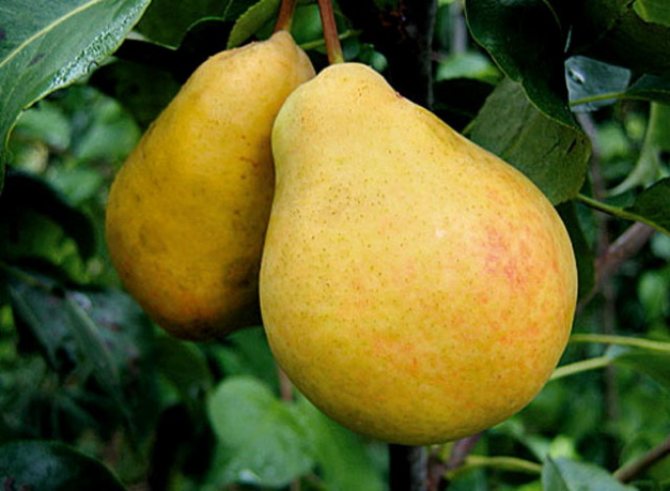
Gardeners note the high degree of frost resistance of Krasuli. The fruits are round in shape. Yellowish-green pears reach a weight of 120 grams. The variety shows high yields.
Krasula is not susceptible to scab, bears fruit better in the presence of pollinating neighbors, gets along well with Raduzhna and Severyanka.
August dew
By crossing the fruit crops Tenderness and the Triumph of Pakgam, the breeders received the August dew. This plant tolerates the harsh climate of the Moscow region well. August dew is characterized by a drooping crown and medium thickening.
The culture begins to bear fruit in the 4th year after planting. Delicious yellowish pears weighing up to 140 g received positive feedback from gardeners.
The pollinator can be Yakovlev's favorite pear.
Cathedral


The variety is resistant to various diseases
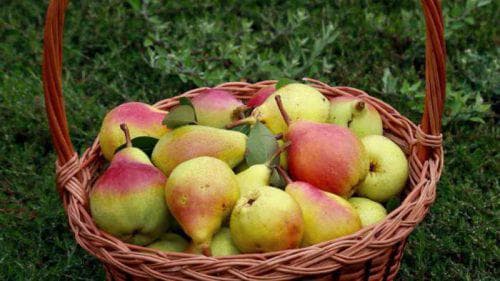

The juicy pulp of the Cathedral pear is distinguished by a sour taste with a piquant sweetness. Small fruits keep well.
Cathedral has a high degree of resistance to winter frosts and fungal diseases. The variety is not susceptible to pear mites and bacterial burns.
Red-sided
The fruits of this culture are juicy and heavy. Each pear is large in size, it can weigh up to 190 g. Gardeners do not recommend keeping them on the branches until they are fully ripe, as the branches will break, and the pears will crumble.
Red-sided well tolerates the harsh winters of the Moscow region. The seedlings of the culture are not susceptible to diseases caused by pathogenic fungi and bacteria.
Chizhevskaya
Chizhevskaya is interesting for her description. The fragrant and juicy fruits of a three-meter tree are harvested by gardeners annually and in large quantities, but the harvest can be stored for no more than 7 days.
The dwarf culture blooms in the third year of life; it demonstrates good ovary formation in the neighborhood of Lada.
The pear varieties harvested in the second half of August for the Moscow region are more mature.
The South Ural variety was bred in the community of Chelyabinsk and Yekaterinburg breeders. The tree is medium-sized, round, with low self-fertility. A pollinator is required, such as Krasulya or Severyanka. The variety is very hardy. The frost resistance of the Rainbow pear is declared -37.20, but with a little freezing, the seedlings and adult trees endured 48.30 in the winter of 1978-1979.
Fruits weighing up to 140 g are rated at 4.5 points in taste. The pulp is sour-sweet, aromatic. Fruits in a ripe state can sag for 10 days without shedding, then spoil. The harvested crop can be stored for a week.
Advantages:
- excellent commercial quality of fruits;
- high winter hardiness;
- resistance to diseases and pests.
We owe the emergence of a new variety to genetics S.P. Yakovlev, who crossed the local resistant variety Tenderness with the Australian Triumph Pakgam. In the photo - a pear August dew, in all its splendor.
Fruits weighing 120-140 g are green when ripened, turn yellow and acquire a slight blush when ripened. Keeping up to 3 weeks. Assessment of palatability 4.6 - 5 points. Fruiting is regular. The pear variety Avgustovskaya dew is resistant to scab, is little affected by leaf-eating insects. When overloaded with fruits, the tree weakens.


The variety is old, folk selection. Ripe fruits do not have ripe seeds. But the variety is prone to scab. The tree is tall, the fruits are small, 70 - 80 g. Fruits ripen in August, are stored for a week. Ripe Bessemyanka pears crumble, remaining on the branch, increase in volume, the pulp deteriorates. The variety tolerates the winter of the Moscow region normally. The yield of an adult tree is about 270 kg.
Read more: How to prepare a garlic bed for planting in the fall before winter
How to plant or transplant a pear in the fall
The main genetic characteristics of the pear are its moisture and heat-loving nature. It does not tolerate a fruit tree and heavy, marginal soils, since a rapidly growing, powerful root system rapidly outgrows the planting hole and the fertile soil introduced into it. Best of all, the tree will develop on sandy loam or loamy soils with good moisture capacity, with a fertile layer. This fruit crop does not tolerate the high occurrence of groundwater, which should be located below 3 m. When planting a pear with a closed root system, a preliminary shedding of the roots must be performed.
Site selection and preparation of the landing pit
The area for the fruit crop should be sunny, protected from drafts and cold winds. An ideal place for good harvests would be the south-east or south side of the site on a small hill. They begin to prepare the place in spring or early summer. To do this, dig up the entire area and add 5-6 kg of compost, potassium salt and superphosphate (30 and 60 g, respectively) for each square meter. Next, they dig out planting pits about 75 cm deep and up to 100 cm in diameter. Slightly stepping back from the center of the pit, stick a strong stake, which will be a support for a young pear. Fertile soil is prepared:
- from compost or humus;
- river sand;
- soil removed from the surface layer of the planting pit.
Potassium sulfate and superphosphate are added to this composition, 20 and 30 g, respectively, per pit. Acidic soil is diluted with limestone. To protect the roots from waterlogging, a drainage layer of gravel or expanded clay is provided.
Preparation of planting material
Two-year-old seedlings, which are sold with an open or closed root system, have the best survival rate. When buying, you should pay attention to the quality of the planting material, which is characterized by:
- the presence of a central root with a length of at least 30 cm with several (up to 5 pieces) branches;
- the roots are elastic, without mechanical damage and signs of rot;
- pronounced skeletal branches are commensurate with healthy roots.
Pear seedlings with an open root system are planted within 14 days after purchase. During this time, the main task of the gardener will be to prevent the roots from drying out and to protect it from direct sunlight. Store them in a cool, dark place with roots wrapped in several layers of paper and damp burlap.
Before planting, young trees are carefully examined. With a sharp, disinfected pruner, rotted or damaged areas are cut out, making cross sections. Small roots are cut out only if necessary, it is they who pass water and nutrients through themselves. When the roots dry before planting, they are placed in water for 12 - 20 hours. All leaves are removed and the root system is immersed in a clay solution: clay, mullein and water in a ratio of 1: 2: 5). Then it is dried for half an hour.
Algorithm for planting pear seedlings in autumn
A step-by-step guide on how to plant a pear in the fall looks like this:
- in the prepared planting pit, a recess is dug, commensurate with the dimensions of the root system;
- the roots are straightened and distributed, making sure that they do not bend;
- position the seedling vertically so that the root collar is at least 4 cm above ground level;
- filling the hole with prepared soil, make sure that no voids remain in it, periodically gently shaking the seedling;
- the soil of the trunk circle is tamped tightly;
- the trunk of the pear is tied to the support using a soft material;
- planting is abundantly watered with 3 buckets of warm, settled water;
- with the help of sawdust or peat, mulching is carried out.
Rules for transplanting pears in the fall
Transplanting pears to a new place is carried out only for young plants. So, a tree over 15 years old will not tolerate such a procedure and will simply die.
Planting or transplanting a columnar or other variety of pears in the fall is carried out for healthy trees without fungal infections. The basic rules are as follows:
- preparation for transplantation begins in spring, digging the trunk circle around the perimeter of the crown, with cutting off excess roots with a sharp shovel;
- before the procedure, the plant is watered abundantly;
- take out the pear very carefully together with an earthen lump and put it on the prepared cellophane, tying it tightly around the trunk;
- the new planting hole should be at least 40 cm wider than the root system of the tree;
- the bottom is filled with fertile soil from sod land and peat with the addition of sand and limestone for acidic soils;
- make sure that the root collar during planting was above the soil level;
- the trunk circle is well tamped and watered, mulched;
- before the cold weather, the transplanted pear is covered.
Autumn varieties
Autumn pear crops include:
- Muscovite;
- Dressy Efimova;
- Geru.
Muscovite
The Muscovite is characterized by its small size and powerful spreading branches. The sweet juicy fruits of the culture have a pleasant aroma. A crop of light yellow fruit with greenish blotches and orange markings appears on the trees annually. The fruits do not crumble, they are transportable.
Elegant Efimova
The smart Efimova was awarded the gold prize of the international fair in Germany.This variety is winter-hardy, it is characterized by a high degree of resistance to pests and diseases.
This horticultural crop shows high yields. The pears are colored red-green. If the fruits are not removed in time, they will overripe. The full ripening period begins in mid-August and lasts until the end of September.
Plums and Pears for the Moscow Region. Expert of the Institute of Horticulture.
Pear variety in Memory of Yakovlev
Pear variety for the garden - choosing the best
Unusual garden sculptures and the best pear varieties. Country house.
The fruit culture of Hera looks like a narrow pyramid. When winter temperatures drop to -38 ° C, it can partially freeze. So that this does not happen and the tree does not die, it is better to wrap the stem with a cloth or agrofiber.
Hera's seedlings begin to bear fruit in 5 years from the moment of planting. Large sweet pears can be stored in a cool, dark place for up to five months.
Do not be surprised if at the New Year's table of the owner of the Moscow region dacha you happen to see pears from his own garden. You can save the fruits of winter varieties until January.
Large fruits weighing 180 grams are juiced when bitten. Pears are fragrant and tasty, with a slight tart aftertaste, but they need to be removed from the tree early. Ripe red-sided pear does not hold on to a branch. The variety has retained the best properties during selection, and has the following advantages:
- high frost resistance, at -50 freezing 3 points;
- fruitful, with high quality fruits;
- undemanding to the composition of the soil;
- an adult tree regulates the harvest itself, pruning is not required;
- not damaged by scab, resistant to insect pests.
Fruiting of Red-sided pears occurs at 6-7 years.
Only at the end of September does the Hera pear ripen, presenting the owner with fruits of amazing taste and an average size of 200 grams. Sweet and sour white pulp, granular structure are the distinctive features of this variety. There are no pears that are more shelf-stable. These will lie for 5 months in a cool barn.
The Hera pear tree is of medium height, does not thicken, in the form of a narrow pyramid. Begins to bear fruit in the 5th year. Partial freezing, up to 1.8 points occurs when the temperature drops to - 380. The variety is resistant to bacterial and fungal diseases.
The variety immortalized the memory of the breeder who worked on its creation. Fruiting of pears Yakovlev's favorite comes at 5-6 years. The fruits are beautiful, with a dotted pattern and blush over a delicate yellow-green background. The aroma of quince is characteristic in the aftertaste, but without astringency.
The tree is fast-growing, overgrown, damaged by scab in damp years. The yield increases with age, at 7 years it is 20-22 kg. Good winter hardiness.
There are many more varieties that deserve the attention of gardeners of the Moscow region.
Care after landing
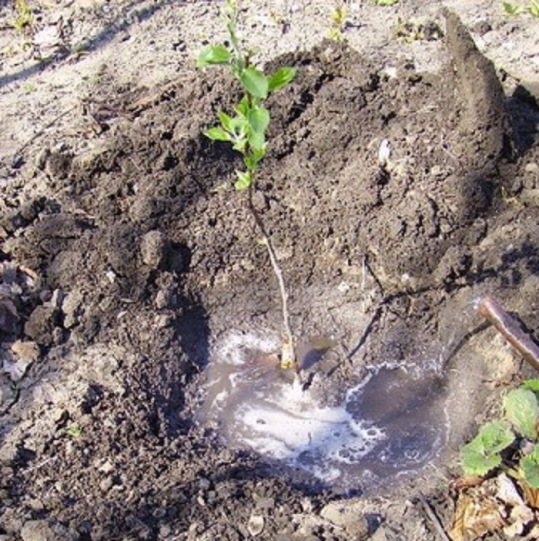

From the moment of planting the pear until the end of the summer season, there is still some time for which you need to have time to help the young tree adapt, take root and prepare for the winter. Caring for a young pear in the fall comes down to several activities:
- maintaining soil moisture - the roots should not dry out, but waterlogging of the soil should not be allowed, therefore, watering is carried out in accordance with precipitation;
- preventive treatment against pests and diseases, for which insecticides and fungicides are used;
- loosening the topsoil. This operation will provide the tree with oxygen - the earth will not be compacted too tightly in a snowy winter;
- weeding weeds, if they managed to appear in the area of the trunk circle.
Preparing for winter


A young pear needs careful preparation for the first winter on the site. If there are already branches on it, they must be carefully gathered together and tied to a peg. It is very important to provide for the trunk shelter from frost breakers. To do this, it is wrapped with a covering material that allows air to pass through, or with pieces of cotton fabrics.If it is possible to come to the site in winter, then it is necessary to spud the tree with snow.
In winter, small rodents like to feast on the bark of young fruit trees, therefore, to organize protection against them, the pear trunk is wrapped with a fine mesh or treated with a deterrent mixture.
The simplest mixture can be prepared by mixing clay and mullein in equal proportions. The smell exuded from the treated wood will drive away the rodents. Another way to protect against them is spruce branches, which are laid out around the pear.
The best pear varieties according to production data
The Moscow region is located in the middle latitudes, it is dominated by a rather sultry summer, as well as a harsh winter period. In conditions of such climatic features, not all varieties of pears grow. However, there are species that are quite adapted to local weather conditions. Popular high-yielding fruit varieties will be described below.
| Variety name | Brief description: resistance to diseases, frost, storage capacity |
| "Lada" | This species belongs to the early summer, adapted to the harsh winter, as well as to the hot summer, while not reducing its yield. High disease resistance. The fruit is yellowish in color with a nice barrel. Sweet and sour to taste, they have a persistent aroma. The yield of this variety is consistently high. |
| "Chizhevskaya" | It is considered a representative of late-ripening species, easily tolerates frosts and sultry summers. The variety is not susceptible to various fungal diseases. The fruit has a pinkish tint. It is characterized by high performance. |
| "Fabulous" | Quite a tall type of pear with large fruits, weighing more than 250 grams. The fruit is characterized by a green color with a reddish barrel. Good taste. The level of safety is high, capable of withstanding transportation. The species stands out for its winter hardiness, as well as immunity to the gall mite. |
When is it better to plant a pear: in spring or autumn
Planting pear seedlings before the cold weather has its advantages. Among them, the following features should be noted:
- young trees direct all their forces to the growth of a powerful, strong root system, while spring planting forces the plants to intensively increase the green mass;
- strong pear roots subsequently easily withstand frost and drought;
- overwintered seedlings are adapted to frost, have good winter hardiness;
- after planting in the fall, there is no need to additionally care for the pear, it is enough to carry out measures to prepare for the winter;
- autumn trees grow faster than those planted in spring;
- large nurseries sell quality seedlings in the autumn.
What autumn month can pears be planted
Transplanting and planting pears in a new place in autumn ensures its quick and easy adaptation to the harsh climate. But such activities are performed at certain times, when the biological and chemical processes of the pear slow down, and it enters a state of dormancy. Therefore, the procedure is timed:
- by the first decade of September and complete it until mid-October in the central regions;
- in the south - by early October to mid-November.
Early varieties
Early varieties of pears for the Moscow region are characterized by self-fertility. To get a harvest, 2-3 trees should be planted nearby, it is better if one of them is of a different variety. Self-fertility, supplemented by cross-pollination, increases the number of ovaries.
In the description of the marble pear, its resistance to fungal diseases, including scab, is noted. A tree up to 4 meters high with a spreading crown begins to bear fruit at 6-7 years. A feature of the plant is the shedding of fruits with insufficient watering. The fruits are medium in size and taste, ripening in early August. Winter hardiness of the variety is good, annual fruiting.
Read more: Berries rot on grapes: causes, prevention, treatment
The variety belongs to the new, fast-growing standard.The tree grows up to 2.5 m, first forms a funnel, then rises in a pyramid. This is one of the earliest varieties, pictured is a Lada pear before harvest in July. The fruits are not large, 90 - 110 g, but the yield is about 40 kg from one adult tree. Fruiting occurs 2-4 years after planting.
Advantages of the variety:
- high winter hardiness;
- resistance to bacterial burns, scab;
- low requirements for lighting;
- good yield.
The variety is early ripening, the fruits reach 250 grams, but the tree is very tall and harvesting is difficult. The early harvest is stored for no more than 2 weeks, the fruits are tasty, aromatic and in early summer they are sold quickly. Pears are used for conservation, preparation of mashed potatoes, juices.
The variety was bred in the South Ural Research Institute of Chelyabinsk. The author of the variety is E.A. Falkenberg. The Krasulia pear was included in the State Register in 2002. A tree up to 4 meters high has a spreading crown and medium overgrowth. The thorns on the branches make harvesting difficult. The harvest is tied on ringlets, last year and young growth.
Krasuli's fruits are small, 90-120 grams, flattened-rounded. When the pear is ripe, it turns yellowish green with a bright blush. The variety is intended for industrial breeding and private households.
Advantages:
- high productivity;
- resistance to scab, fire blight, pear mite;
- good winter hardiness.
Site selection and preparation


A place
To plant a pear, you need to immediately choose a permanent place, since the tree does not respond well to transplantation. This should be an open area with good lighting and sufficient heat from the sun. Considering that the tree in the near future will acquire a spreading and lush crown (about 5 m in diameter), care must be taken that there are no other tall stands or buildings next to the young tree.
Neighborhood with other cultures
The pear perfectly coexists with fruit crops, which are the same in care. For example, an apple tree can be planted nearby, but it is better to stay away from a mountain ash, because both of these trees suffer from the same diseases and suffer from the same pests. If one specimen falls ill, then the "neighboring" one may suffer.
The soil
The soil on the site should be loose and light, with sufficient moisture and high-quality (fertile) composition. Excessive clay content in the soil is undesirable and even dangerous for the seedling. When preparing the landing holes, you should pay special attention to this. Replacing the upper clay layer with a high-quality soil mixture (for example, a mixture of peat with complex fertilizer) or fertile soil will delay the death of the tree only for 2-3 years, since the root system will grow and at a depth of 40-50 cm it will still come into contact with the clay layer ...
Preparation of planting holes and methods of planting seedlings


If there is a clay layer in the selected area, it is recommended to dig a hole shallow, not reaching the clay bottom. In order for the roots of the seedling to sit well in the ground and not come into contact with the clay, it is necessary to make small grooves of the same depth and length of about 1 m in all four directions from the planting hole.These grooves must be filled with any organic waste (for example, food residues, sawdust, shavings, weeds or needles), which have been pre-soaked in liquid fertilizer. When planting, the roots of the seedling are evenly distributed in different directions, reaching organic matter. In such conditions, the root part of the pear will not grow deeper to the clay layer, but in width, and besides, it will be provided with food for several years in advance.
If the groundwater is close to the site or it is located in a lowland where high humidity persists, and especially during the spring thaw of snow, in areas with heavy soil, you can use another method of planting a seedling.It is recommended to plant a young tree on an earthen mound (from fertile soil) about fifty centimeters high. Every year you need to add soil to the mound, as the needs of the growing tree will increase.
On a standard plot of land with everything you need (food, moisture, heat and light) for planting and growing young pears, the usual method is used. Planting holes begin to be prepared in early autumn, approximately 15-20 days before planting. First, the land is freed from weeds and dug up. Then the holes are deepened by 45-50 cm, sorting the soil - the top layer of soil is folded in one direction, and the lower one in the other. The diameter of each hole is about 1 m. The bottom of the holes must be loosened thoroughly. The top layer of soil dug from the planting pit must be mixed with several components - coarse river sand, peat, superphosphate, rotted manure and complex fertilizer containing phosphorus and potassium. For soil with a high level of acidity, it is recommended to add lime (in the form of crumbs) and chalk (in the form of powder), but fresh manure cannot be used. He is able to cause severe burns to the root system, which will lead to the death of the plant.
Answers to frequently asked questions
Pear variety Lada. The yield of different varieties of pears is different. This should be borne in mind when choosing a variety.
Question number 1. How to properly prepare a fruit tree for wintering?
First, rotten fruits are removed from the plant and under it. Then the trunk and crown are treated with a 5% urea solution to prevent the development of scab. Do not forget about the prevention of pests and diseases. After that, we carefully insulate the plant.
Question number 2. What sort of pear is the best for the Moscow region?
There are a lot of options. Some of the best varieties are: Lada, Rogneda, Tenderness, etc. When choosing, it is necessary to take into account a number of factors. This tree is very thermophilic and at the same time not particularly winter hardy. That is why the choice of a species suitable for a given area should be taken very carefully.
Pear Tenderness - a high-yielding winter-hardy variety
Question number 3. Can this crop be pruned in summer?
August dew
The tree is undersized, the crown is of medium density, slightly drooping. Fruits are green with a slight blush, a large number of subcutaneous points, medium-sized, short-pear-shaped, without ribs. The skin is smooth and dull. The pulp is white, juicy, fine-grained, tender. Winter-hardy and high-yielding variety with high resistance to most pear diseases.
| Entering fruiting | Tree height (m) | Fruit weight (g) | Harvest | Shelf life (days) |
| for the 4th year | until 3 | 110-130 | mid august | 14 |
Gardeners' mistakes during cultivation
A high yield can be harvested in any climatic zone, provided that the correct variety of fruit is chosen, as well as taking into account the necessary standards of cultivation.
- The most basic mistake lies in the initially incorrectly selected pear variety. That is, it is not intended for cultivation in the climatic zone of the Moscow region.
- Violations of the elementary care of the crop are also possible, as a result, a poor harvest, or even the death of the plant.
- When choosing which pear variety is best suited for planting in the country, gardeners often forget that many of them may need pear pollinator varieties.
Finally, I would like to note that the Moscow region region is located in such a climatic zone, which, in turn, is characterized by a number of features. Unfortunately, they are not suitable for every variety of pears. Therefore, before purchasing young trees of a certain type, you should carefully read whether the weather conditions in the area are optimal for its growth.
"Winter decanca"
In another way they call "winter duchess". It is a massive tree with a wide branched crown of leaves. Fruiting occurs very early and occurs regularly.Fruits are large-sized, lumpy, of considerable volume. Despite their impressive size, they firmly hold on to the tree in small bunches, without falling off for a long time.
The smell is very weak. The skin is smooth, with a beautiful light amber shade. The pulp is whitish, fleshy and sweet. The main advantages of summer residents include long-term preservation, good transportation, frost resistance.
Pears bearing fruit in late August, early September
The pear was bred by scientists of the Moscow Agricultural Academy named after K.A.Timiryazev. The result is a universal variety, depending on the region, it is classified as late summer, early autumn, autumn. In the Moscow region, the fruits are removed at the junction of summer and autumn. They are ripened and stored in cool conditions for up to 3 months. The skin is light yellow with an indistinct pattern. The pulp is white, sweet.
Advantages of Rogned pear:
- not afraid of Russian winters;
- resistant to all sorts of diseases;
- is fast-growing;
- yield up to 50 kg per tree.
Large and very tasty fruits ripen in early September, but not all. The period of onset of maturity is extended, but the fruits do not crumble, and they can be removed in batches. A soft juicy pear is not suitable for storage. It is better to immediately process the crop for harvesting.


Pear Vidnaya is a winter-hardy variety, little susceptible to fungal diseases. Possesses good frost resistance. Fruiting occurs in the 5th year.
A low tree, up to 3 meters, will give the inhabitants of the Moscow region in September the most beautiful fruits. However, delicate pears can be stored for no more than a week. In the description, the Chizhevsky pear with a three-meter growth is capable of giving a decent harvest. The pear bears fruit regularly. The seedling is grown on a dwarf rootstock, blooms in the third year. Despite the declared self-fertility, the tree is better tied with the Lada pollinator.
Autumn pear variety Nadyadnaya Efimova has an early type of fruiting. The variety won a gold prize in the 80s of the last century at an international fair in Germany. The variety is widespread in the European part of Russia and the Baltic states. Has the characteristic of palatability of fruits by 4.5. Possesses complex resistance to diseases, pests and climatic resistance.
Professional advice
And a few more points related to planting pears in the fall.
- You cannot plant pears next to any varieties of juniper, both wild and cultivated. Despite the antibacterial phytoncides secreted by the shrub, it is often more rusty. Many varieties of fruit crops are susceptible to the same fungal disease.
- A planting pit is prepared in at least 1-1.5 weeks, but experienced gardeners say that it is better to do this in a month. Then you can be sure that the soil will not settle and the scion will not end up underground.
- Pears should not be watered at the root. This is done along a small groove dug in a circle at a distance of 20-30 cm from the trunk.
- If in winter gardeners are rarely at their summer cottage, then after the snow falls, it is worth coming to warm up an additional snowdrift to the trunk, and cover the tree itself with burlap or tarpaulin to the very top. The tender bark is loved not only by hares, but also by roe deer.
The video will tell you how to plant a pear correctly in the fall.
Characteristics of the climatic zone
The Moscow region is located in a zone of temperate continental climate, which is characterized by a large annual amplitude of air temperature, as well as significant changes in temperature indicators throughout the day and an uneven distribution of precipitation. Frosty winters, very hot summers, return frosts in late spring make it difficult to grow such a fruit crop as a pear, since the buds are laid in the previous summer, and there is a high probability of their freezing in winter.
Therefore, the owners of garden plots or summer cottages should take into account that in such conditions frost-resistant, resistant to sudden changes in temperature and the vagaries of weather, early maturing, self-fertile varieties and hybrids will fully grow and develop.
Late-ripening crops
A characteristic feature of this category of varieties is a long shelf life, fruits from winter-hardy trees can be harvested at the end of the autumn season. They are not used immediately in food - the taste of a winter pear is revealed with its gradual ripening.
Belarusian late
This is a tree with a round, dense crown. Saplings of the variety are distinguished by elastic branches and light green foliage. Fruits weighing up to 120 g have an orange-yellow color. The pulp is popular due to its tenderness, oily and sweet taste with a pleasant sourness.
A culture with a rounded crown and sparse spliced skeletal branches. The shoots are smooth and brown. Leaves in the form of an oval, green color. The variety gives large, conical fruits with a yellow tint with a brown integumentary color. Weight up to 200 g. The skin is characterized by smoothness, oily. The pulp is of moderate density, slightly oily, milk-cream color. The taste includes a complex effect of sweetness, acidity.
Tikhonovka
The tree is medium-sized, broad-pyramidal or rounded crown (depending on age). Fruits are green, small, firm, round-broad-pear-shaped or ovo-pear-shaped. The skin is dense and tough. The pulp is yellowish, juicy, crunchy. Winter-hardy, unpretentious, high-yielding variety, resistant to pear diseases.
| Entering fruiting | Tree height (m) | Fruit weight (g) | Harvest | Shelf life (days) |
| for the 6-7th year | 3-5 | 60-90 | September | up to 270 |
Chizhovskaya (Chizhevsky)
The tree is medium-sized, of the standard type, the crown is dense, conical. Fruits are yellow, with a slight blush, large, obovate or pear-shaped, without ribs. The skin is thin, smooth and matte. The pulp is almost white or light yellow, juicy, semi-oily. A frost-resistant, high-yielding hybrid resistant to major pear diseases and extreme growing conditions.
| Entering fruiting | Tree height (m) | Fruit weight (g) | Harvest | Shelf life (days) |
| for the 3-4th year | 3-5 | 120-300 | from mid to late August | up to 120 |
Choose the variety you like and enjoy healthy and tasty fruits.
Dukhmyanaya
The tree is medium-sized, the crown is of medium density, wide-pyramidal. The fruits are green, with a brick-red blush, medium, pear-shaped. The skin is smooth and shiny. The pulp is white, juicy, buttery, with a pleasant sweet and sour taste. Medium hardy high-yielding variety. Resistant to bacterial cancer and moderately scab resistant.
| Entering fruiting | Tree height (m) | Fruit weight (g) | Harvest | Shelf life (days) |
| for the 4th year | 3-5 | 140 | August - early September | up to 45 |
Severyanka
The tree is medium-sized, the crown is of medium density, wide-pyramidal. Fruits are yellow with green spots, small, truncated-conical, irregular. The skin is dense and dull. The pulp is creamy, juicy, medium density. Highly winter-resistant, high-yielding variety, resistant to most pear diseases.
| Entering fruiting | Tree height (m) | Fruit weight (g) | Harvest | Shelf life (days) |
| for the 3-4th year | 3-5 | 80-120 | beginning - mid-August | 14 |

